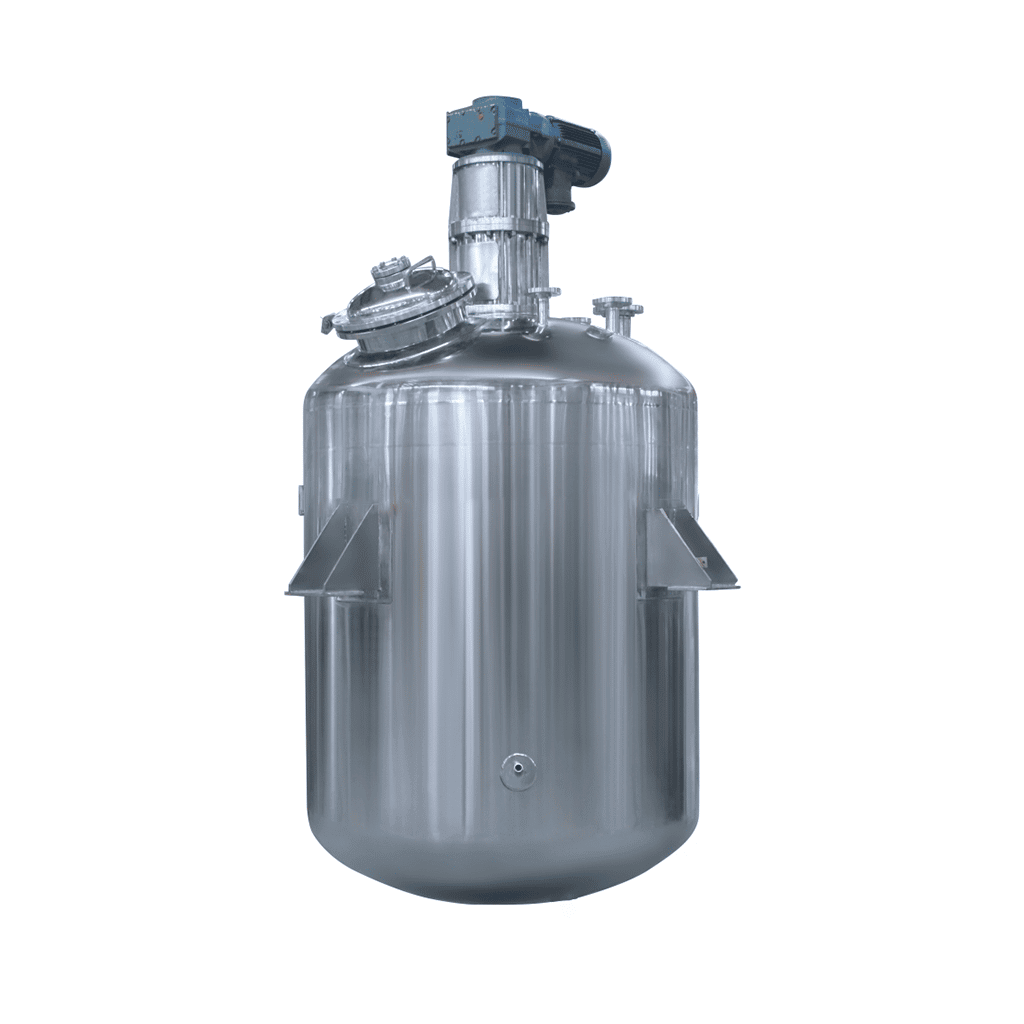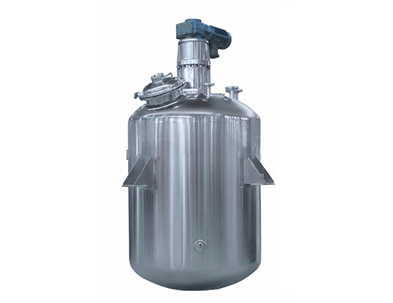
-24-1.jpg)
Stainless Steel Reactor
Stainless Steel Reactor: used in dairy products, sugar, beverages, and other fields
Material
stainless steel (316, 304)
Capacity (L)
10-10000+
Mixing system
anchor, paddle, frame and others
Heating system
electric heating, oil heating and others
A stainless steel reactor is a stainless steel container equipment. The stainless steel reactor consists of a kettle body, a kettle lid, a stirrer, a jacket, a bracket, a transmission device, a shaft seal device, etc. Materials and openings can be made according to user needs and process requirements. Stainless steel reactors are mainly used for stirring, homogenizing, and mixing storage of dairy products, sugar, beverages, food, and various pharmaceuticals.
Request a quote
Characteristics of stainless steel reactor
1. The Power of Stainless Steel
At the heart of stainless steel reactors lies the immense power of the material itself. Stainless steel is an alloy composed primarily of iron, with the addition of chromium, nickel, and other elements. This unique combination gives stainless steel extraordinary properties, making it ideal for stainless steel reactor construction.
The most notable quality of stainless steel is its unparalleled resistance to corrosion. When exposed to harsh chemicals, extreme temperatures, or high-pressure environments, stainless steel reactors remain unaffected, ensuring product integrity and protection. This resistance leads to enhanced system longevity, reduced downtime, and increased overall efficiency, ultimately providing a more sustainable production environment.
2. Temperature and Pressure Sustainability
In the chemical and pharmaceutical industries, different reactions often require specific temperature and pressure conditions to achieve optimal yield and safety. Stainless steel reactors are engineered to withstand a wide range of operating conditions, making them incredibly versatile and adaptable to various processes.
With the ability to endure extreme temperatures, stainless steel reactors can accommodate both low-temperature reactions that require cryogenic conditions as well as high-temperature reactions that demand elevated heat. This flexibility enables manufacturers to optimize their production processes, leading to higher quality outputs and improved overall performance.
Additionally, stainless steel reactors are designed to withstand high-pressure environments. Their inherent strength facilitates seamless operation at elevated pressures, ensuring safety and preventing catastrophic failures. This capability allows manufacturers to take on more challenging reactions that require pressure-sensitive conditions, expanding their possibilities for innovation and product development.
3. Hygienic Design and Cleanability
In industries where cleanliness and sterility are paramount, such as pharmaceutical manufacturing or food processing, stainless steel reactors shine due to their hygienic design and impeccable cleanability. The smooth, non-porous surfaces of stainless steel minimize the risk of microbial growth, making it an ideal choice for products where contamination can have severe consequences.
Additionally, the corrosion resistance of stainless steel ensures that the integrity of stainless steel reactors remains intact, even after rigorous cleaning processes involving harsh chemicals or high-pressure cleaning methods. This cleanability not only improves product quality, it also reduces the risk of cross-contamination and provides a safe, compliant manufacturing environment.
4. Customizability and Adaptability
Every manufacturing process is unique, demanding reactors tailored to specific requirements. Stainless steel reactors offer customization options to meet individual needs, allowing manufacturers to optimize their production systems for maximum efficiency.
From vessel size and shape to the inclusion of additional ports, baffles, or agitation systems, stainless steel reactors can be customized to match the unique demands of various processes. This adaptability reduces waste, improves productivity, and enhances process control, ultimately leading to more consistent and cost-effective production.
Moreover, stainless steel reactors can be easily integrated into existing production lines, minimizing downtime and maximizing operational efficiency. Whether it involves retrofitting an existing system or constructing an entirely new process, stainless steel reactors provide a practical solution that caters to the evolving needs of different industries.
5. Safety and Operator Protection
Ensuring the safety of operators and personnel is a top priority in any manufacturing environment. Stainless steel reactors address this concern through their robust construction and the incorporation of safety features.
The excellent mechanical properties of stainless steel, including its high tensile strength and impact resistance, ensure the structural integrity of the stainless steel reactors and mitigate the risk of accidents. Additionally, stainless steel’s remarkable ability to withstand corrosion prevents leaks, protecting operators from exposure to hazardous substances.
Moreover, stainless steel reactors come equipped with various safety features such as pressure relief valves, temperature sensors, and emergency shut-off mechanisms, enhancing the overall safety of the manufacturing process. These safety measures not only protect the well-being of operators but also contribute to regulatory compliance and industry standards.
Stainless steel reactors have revolutionized the chemical and pharmaceutical manufacturing realms, delivering numerous benefits in terms of efficiency, safety, and durability. With their corrosion resistance, temperature and pressure sustainability, hygienic design, customizability, and operator protection, these stainless steel reactors have become the cornerstone of modern industrial processes.




